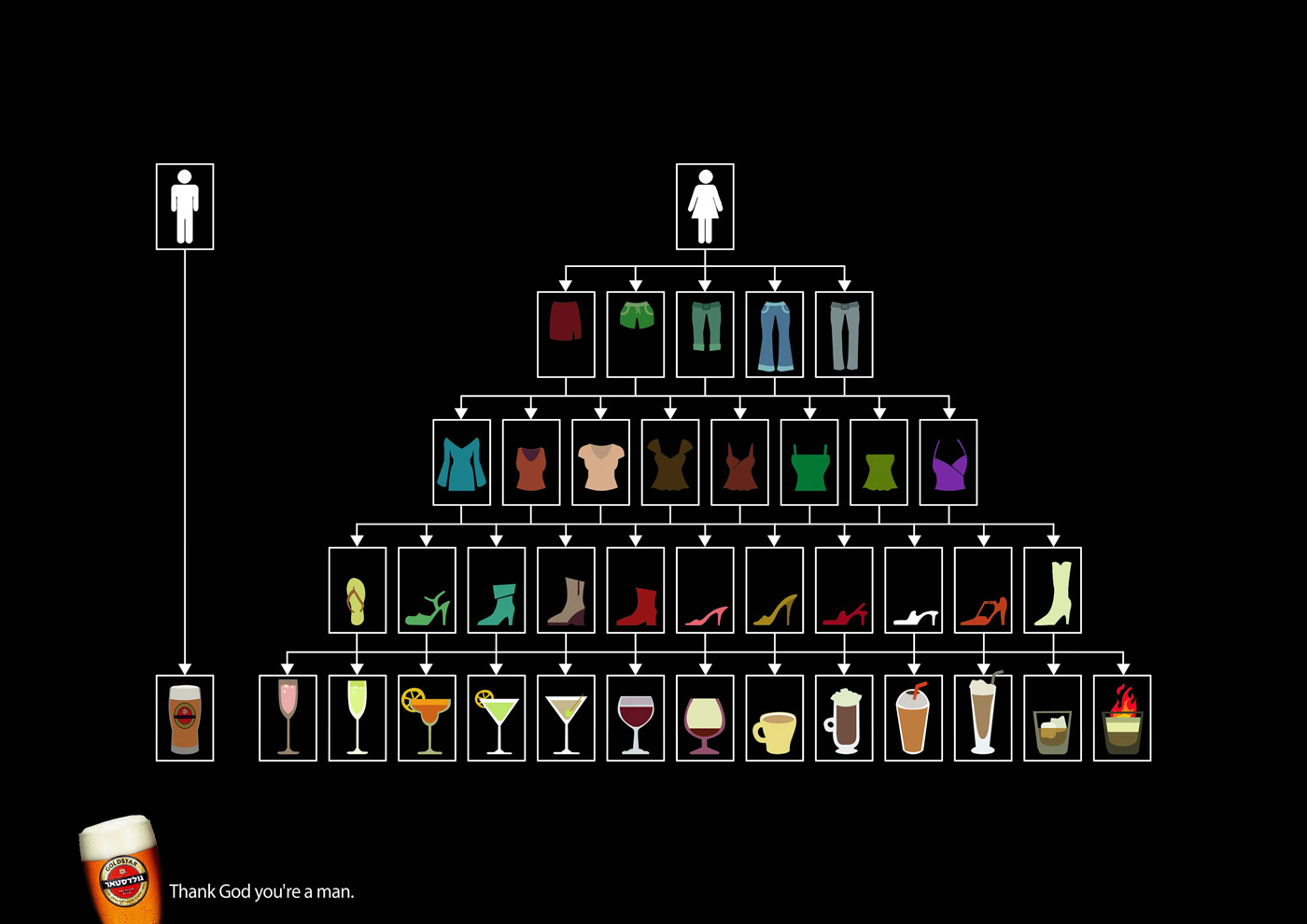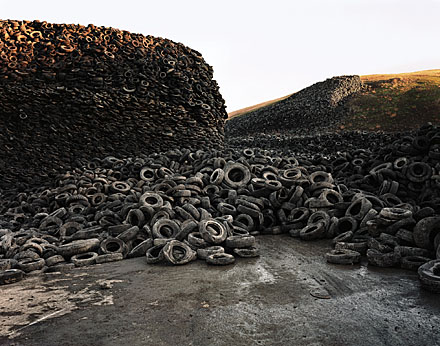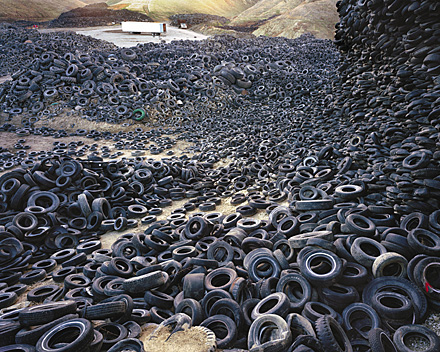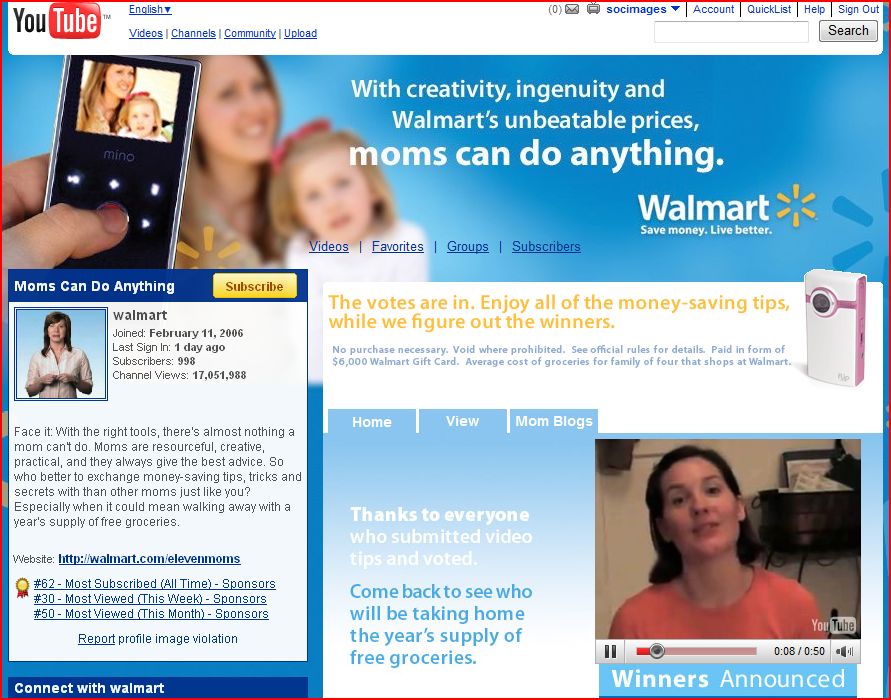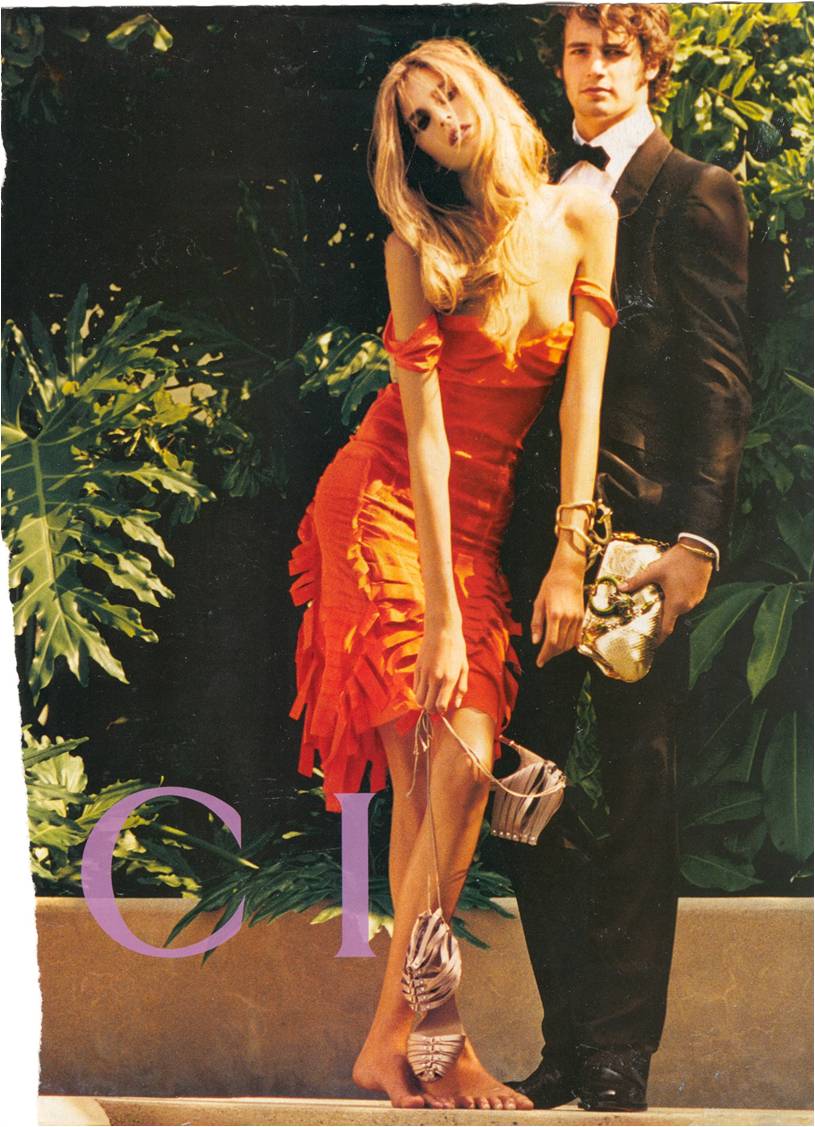In this ad, the copy, which reads “Who said you can’t have it both ways,” refers explicitly to both “play[ing] it safe” with condoms and having “a great time” with “great sex.” Of course, implicitly, it also means not choosing between black and white women. Women are, in the subtext, objects to “have” and black and white women are very different kinds of objects. 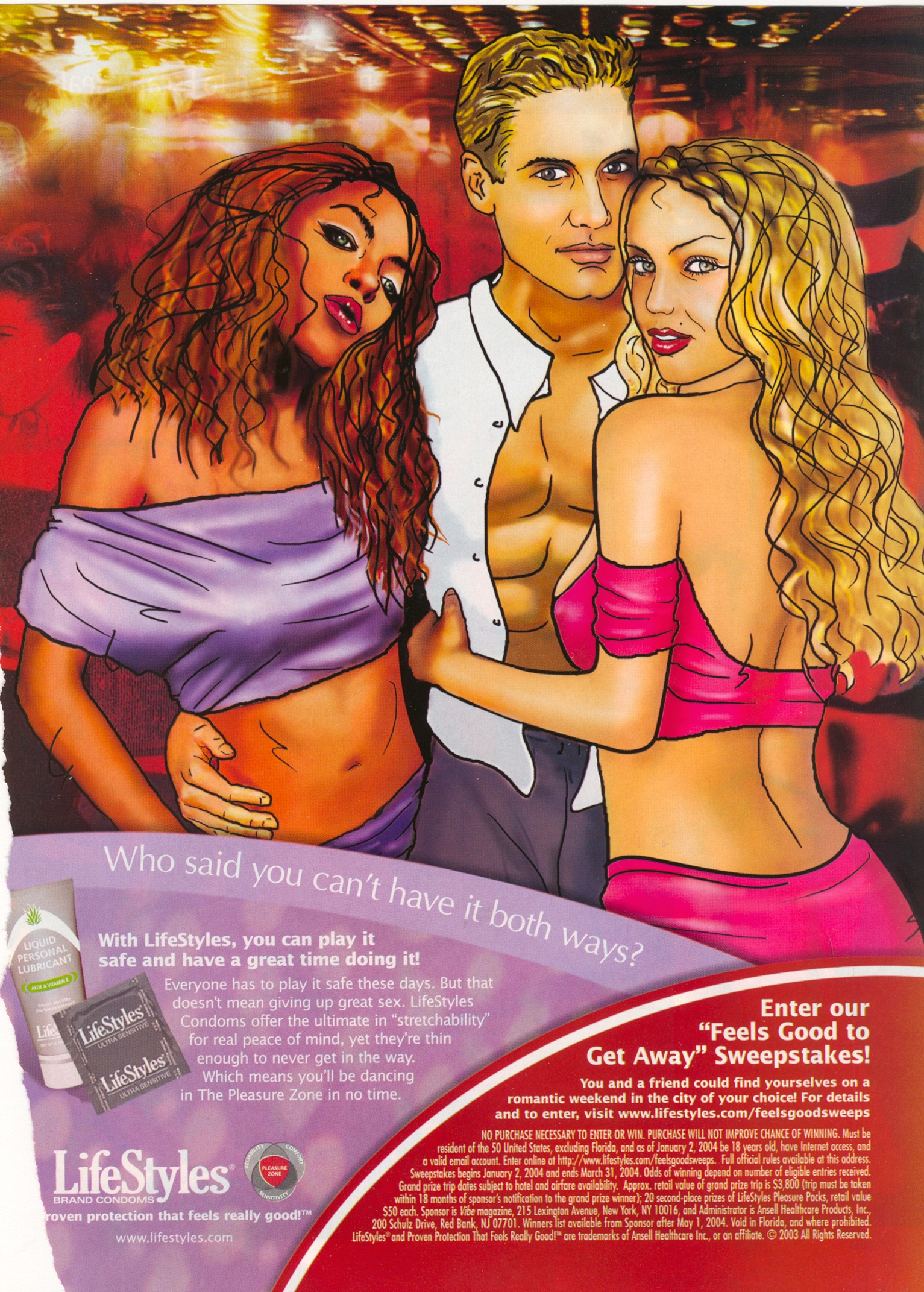
In The Gendered Society, Michael Kimmel argues that women often have to be very careful how they dress, lest they be seen as too frumpy, too old, too slutty, too smart, trying to hard, etc. In comparison, men can often just go as a guy.
Two examples:
Nancy: The invitation says black tie, I guess you’ll wear your tux?
Frank: Yup.
Nancy: Mr. Easy. Once choice, one look. I have to ponder endless combinations of hair, makeup, gowns, shoes, jewelry. I have to decide if I want to look sultry, subdued, glittery, basic, bright, dark, modern, traditional…
Frank: Hon, who do you want to please?
Nancy: You, of course.
Frank: I stopped listening after “sultry.” There, Mr. Easy to the rescue.
Nancy: Gee, thanks. Sultry’s the hardest one.
The fact that women can’t just be a “person” at the bar or the black tie event is related to the fact that women are a marked category, while men are culturally neutral. That is, women are women and men are people. For more posts on this idea related to gender and other categories, see this post on toys for kids and our post on that famous real bodies exhibit.
(I found the first image here; the LuAnn cartoon was given to me by Myra M. F.)
In a previous post, I shared some photographs by Edward Burtynsky of oil fields and mines. Burtynsky takes pictures with an eye towards the modern global economy. This set documents massive piles of waste sorted for recycling:
Three pictures of the Oxford tire pile in Westley, California (1999):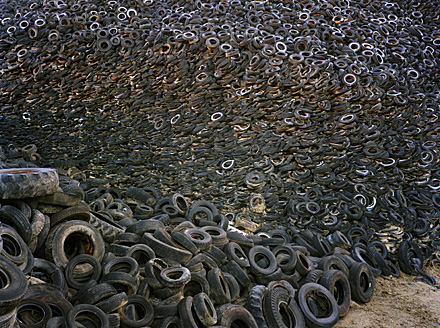
Densified Oil Drums in Hamilton, Ontario (1997):
Metal for recycling in Hamilton, Ontario (1997):
Metal for recycling in Hamilton, Ontario (1997):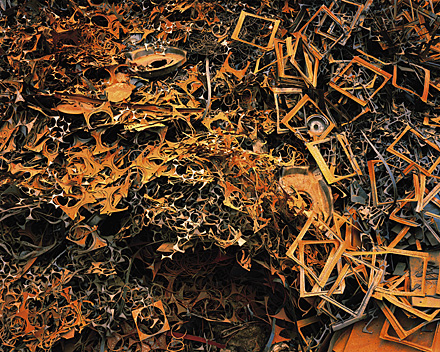
Plastic toy parts in Guiyu, Guangdong Province (2004):
Circuit boards in Guiyu, Guangdong Province (2004):
Recycling work station (I believe the worker is taking apart computers) in Zenguo, Zhejiang Province (2004):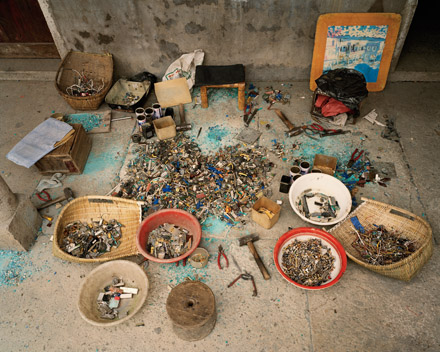
Stephen W. sent us a link to a Walmart YouTube channel that recreates the supermom mythology. The website encourages moms to submit videos of themselves explaining how they’ve figured out how to save money while shopping, cooking, and cleaning. The website reads:
With creativity, ingenuity, and Walmart’s unbeatable prices. Moms can do anything.
(I bet they can’t coupon us out of this economic crisis though.)
Here’s a screen shot:
My first thought was: So apparently the wife is the one doing all the spending and, if she is a good little wife, she’s frugal and makes her husband’s hard-earned money go further. This would reproduce the husband as money-earner/wife as money-spender stereotype.
But then I realized: There’s no mention a dad or any earner anywhere on the front page. It’s nothin’ but moms.
Robin B. sent us a link to a story in the New York Times magazine chronicling one woman’s decision to have a surrogate carry her biological child. Surrogacy is, from one perspective, extremely expensive and, from another perspective, extremely lucrative. The photos accompanying the story illustrate, almost as if by design, how “mothering” is being spread out in systematic ways to different kinds of women. Robin note that the accompanying article bought up lots of issues, but did little to think them through. In contrast, she points to a set of letters written in response.
Lisa Wade, PhD is an Associate Professor at Tulane University. She is the author of American Hookup, a book about college sexual culture; a textbook about gender; and a forthcoming introductory text: Terrible Magnificent Sociology. You can follow her on Twitter and Instagram.Simon O., who sent in this ad for high-speed internet, tells us that the text reads “just suck it down.” He also tells us that the Austrian government pulled the plug (so to speak) on this advertisement.
But seriously… there is good evidence that pornography has driven a great deal of the innovation in communication techology since… well, since communication technology existed. Here’s a Guardian article on how it’s doing so even now.
In STRATOS, “the premier in-flight magazine for corporate and private jets,” I found this two page article (text below):
Selected text:
High Dollar Highballs
STRATOS travels the globe in search of $1,000 cocktails in another installment of the world’s most exclusive cocktails.
…
Burj Al Arab, the dreamy, sail-like hotel on the water in Dubai, surely serves one of the most impressive… runs about $7,500. But when you factor in the cost of the ingredients, it almost seems reasonable. Start with a healthy pour of The Macallan 55 Year Old Single Malt Scotch… bottles… sell for $15,000 or more… The drink is stirred with a hand-carved piece of wood salvaged from a Macallan oak cask and presented in a Baccarat tumbler of 18-carat gold…
Hotel de Crillon, one of the loveliest hotels in Paris, has a beautiful lounge where barman Philippe Olivier offers perhaps the ultimate Sidecar for $1,600… this version opts for the creme de la creme of Cognac: Louis XIII Black Pearl, a special edition of Remy Martin’s long-aged signature bottle selling for about $30,000…
Master Mixologist Tony Abou-Ganim created Between the Sheets ($10,000) for Eyecandy Sound Lounge and Bar, the lounge at Mandalay Bay in Las Vegas. A slug of 200-year-old British Imperial Navy Rum gives this drink its kick, while a pour of Hardy’s Perfection, a rare and expensive long-aged Cognac, provides the subtle flavors… This drink is, naturally, made for two. The bartender assembles it in a sterling silver shaker and strains it into a pair of Baccarat crystal glasses… The lucky couple, once the last drop has been drained, takes home a cherry wood box, complete with engraved name plate, holding the shaker, the glasses and a crystal decanter.
An argument: Because of the way we are segregated by class in the U.S., people rarely mix socially (pun intended) with others very far outside of their own social class. For me, paging through magazines aimed at the super rich (see other posts from them here, here, and here), is kind of like flipping through Maxim. There’s a whole world out there that is not aimed at me and of which I am largely unaware. The segregation that nurtures this ignorance is part of what sustains our complacency. Most of the time I can be completely naive to the entitlement to extremes of luxury that is marketed to the very rich, like I can remain blissfully unaware of what they are saying about women and men in Maxim magazine. Political sociologists suggest that it is not deprivation that incites revolution, but relative deprivation. That is, not having much doesn’t cause people to resist the system, it is the realization that others have so much more. As long as we remain unaware, the system is likely to continue unchallenged.
Maybe it doesn’t even make sense to say that we are segregated by class. Class does separate people, but it also brings them together. Working and middle class people are brought directly into interaction with people of other classes when they clean houses, are hired gardeners, and work as receptionists, administrative assistants, nurses, and nannies. And it has often been this way throughout history (think slaves, indentured servants, etc). So to say that we are segregated might be a stretch.
I also don’t know how I feel about this argument in light of the rash of reality shows that have emerged over the past 5-10 years that depict real, honest-to-goodness rich people basking in luxuries that most of the viewers could never afford. Not that (I think as I write this) reality shos are all that different from the non-reality shows that have been on TV for a very long time that depict extreme wealth (e.g., Dynasty). Do we not, on some level, recognize that those people, at least those in the reality shows, are real? Or do we identify with them over and against people of our own class? (I described how this might work in a previous post on McDonald’s coffee.) Would actual physical integration (insofar as it doesn’t exist) have a different impact on us than the integration that occurs on between us and our television screens? Or does our current social climate challenge the tenet of relative deprivation?
Asked another way, given that I am a sociologist AND watch TV, why do I still find the stupid article about expensive cocktails so surprising?
Norms of masculinity include prescriptions to pursue sex. Taught to expect women to resist, “real” men supposedly work around refusals instead of taking them at face value.
In light of this, some sociologists argue that rapists are not non-conformists (somehow deviant), but hyper-conformists. Rapist are men who take rules of masculinity to their logical conclusion.
When I discuss this in class, I show this Gucci ad:
The clean-cut, clear-headed, well-dressed, all-American young man looks calmly and confidently into the camera, while the woman looks as if she is drunk, or drugged, or both. Barely able to stand, holding onto her shoes, her dress falling off… Has she just been raped or is the rape yet to occur?
And does the imagery in this ad suggest that a (potential) rape scenario is mainstream in America, un-remarkable, even fashionable? If so, what does that say about the depth of our rape culture?

